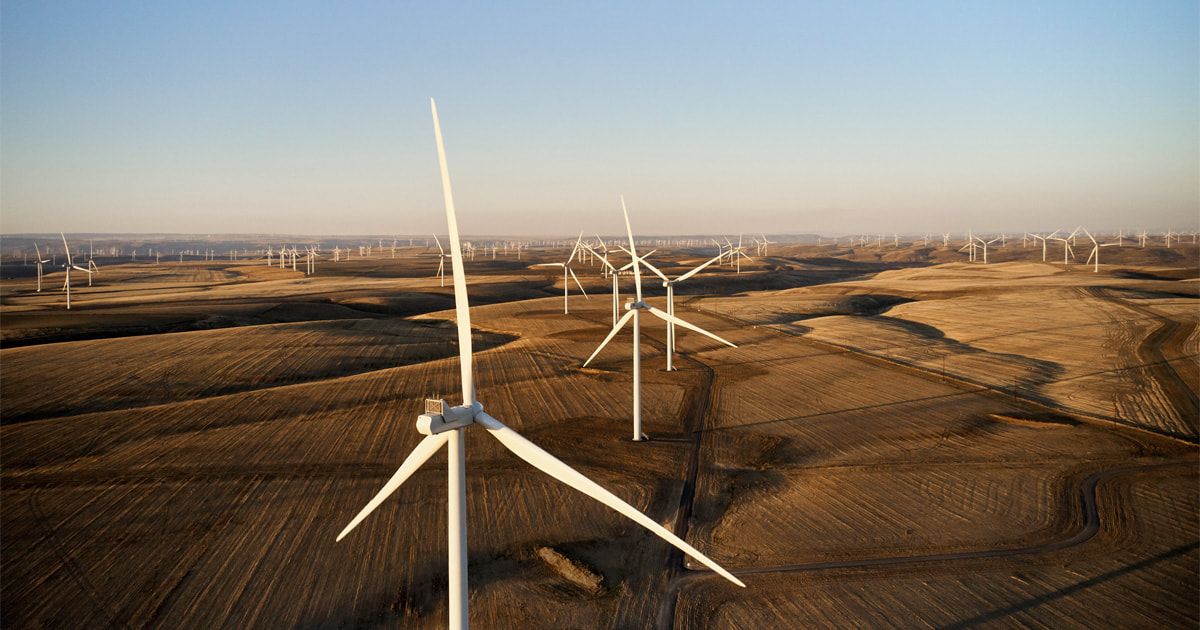Apple Steps Towards New Investments In Clean Energy And Urges Suppliers To Decarbonize

On Tuesday, Apple Inc said it would go for new investments to build solar and wind projects in Europe and advised its suppliers and traders to reduce the carbon content to zero level in operations linked to the manufacturing of iPhones and other products. The company committed in 2020 to eliminate carbon emissions from its entire business by 2030, including products and its vast supply chain – which stretches from Vietnam to Brazil.
The iPhone maker will now require its supplier partners to report on progress towards carbon neutrality targets, specifically reducing Scope 1 and Scope 2 emissions linked with the manufacturing of Apple products, and will review the yearly growth. More than 200 traders and suppliers, which have responsibility for 70% of Apple’s direct manufacturing spend, including Nitto Denko Corp Corning Inc, SK Hynix Inc, STMicroelectronics, and Yuto, have put forward their commitment to using clean energy, such as wind or solar power, for all Apple manufacturing, Apple said.

Steps Taken By Apple To Minimize Waste
From the earliest stages of design through manufacturing, use, and recycling, Apple strives to minimize the impact of its operations on the environment. To encourage a healthy and clean environment for all, Apple is actively taking steps to improve its product design, manufacturing, energy use, and recycling programs, including:
- Selection of environmentally acceptable materials and substances
- Reduction of waste from the production process
- Providing software tools that allow users to control the energy-saving features of their systems
- Providing product recycling programs to customers worldwide
The impact of production on the environment has come into the news in current years, and pressure is growing on manufacturers to find ecological alternatives to their processes. Apple is the latest major brand to enter this arena with two new eco-friendly innovations. The first of Apple’s new green innovations is a joint venture with ten supply chain partners to reduce the company’s reliance on non-renewable energy and address the challenges of climate change.
Apple and ten participating suppliers will invest nearly $300 million over the next four years in the China Clean Energy Fund. The fund will invest in and develop clean energy solutions with more than a gigawatt of renewable energy, equivalent to powering nearly one million residential homes.
Apple’s contribution not only accelerated the development of this new technology but also committed to a joint investment with the two metals companies and the Canadian government, which will put an additional $144 million into future research and development in this area. The new process replaces carbon with an advanced conductive material that releases oxygen instead of carbon dioxide. The technology is already in use at Alcoa’s technical center and further rollouts are planned once testing is complete. Once fully developed and implemented, the method has the potential to eliminate greenhouse gases from the global smelting industry.
Apple demonstrates its commitment to making the manufacturing process more environmentally friendly, not only for itself but for industries around the world. Whether it’s investing in people, infrastructure, or new technologies, the world’s biggest brands are best positioned to make a significant impact in the fight against climate change. Over the past decade, Apple has made significant strides in the area of the environment. In 2012, it committed to switching to 100 percent renewable energy—and by 2013, its data centers were running entirely on clean energy.
A few years later, the company’s global operations were 93 percent renewable, leading to praise from groups such as Greenpeace, who said Apple “helped set a new bar for the industry.” A year ago, the company’s biggest environmental announcement came. Apple has revealed plans to become completely carbon-neutral by 2030. This goal encompasses the entire business, from its manufacturing supply chain to the product life cycle. This has also had a ripple effect on the companies Apple works with; according to Jackson, more than 110 suppliers “have embarked on a journey to clean energy and carbon neutrality,” he explains.

Views Of Apple On Clean And Renewable Energy Usage
Apple explains that increasing the energy efficiency of the device can significantly reduce the carbon emissions that the device generates during use. For example, it says the low power requirements per watt of the M1 chip reduced the overall carbon dioxide level of the Mac mini by up to 34 percent. In March, The company also informed about the first application of its trial, carbon-free aluminium smelting for the aluminium used in the iPhone SE 2022. Low-carbon aluminium is also currently used in the production of 16-inch MacBook Pros.
The company has also formally asked its traders and suppliers to commit to 100% renewable energy for manufacturing. Many multinational companies are increasingly focusing on universal supply chains to decrease their carbon dioxide level as temperature and climate change becomes an increasing focus for investors and regulators. The company said the European investment is part of a strategy to address about 22% of its carbon footprint that comes from customers who use electricity to charge their electronic devices.
With the new projects constructed in Europe, the company aims to power all electronic devices of Apple on the landmass with a low-carbon current. The company said that in total the strategic investments and funds would add 3,000 gigawatt hours of new renewable energy to the grid on a yearly basis.
edited and proofread by nikita sharma





